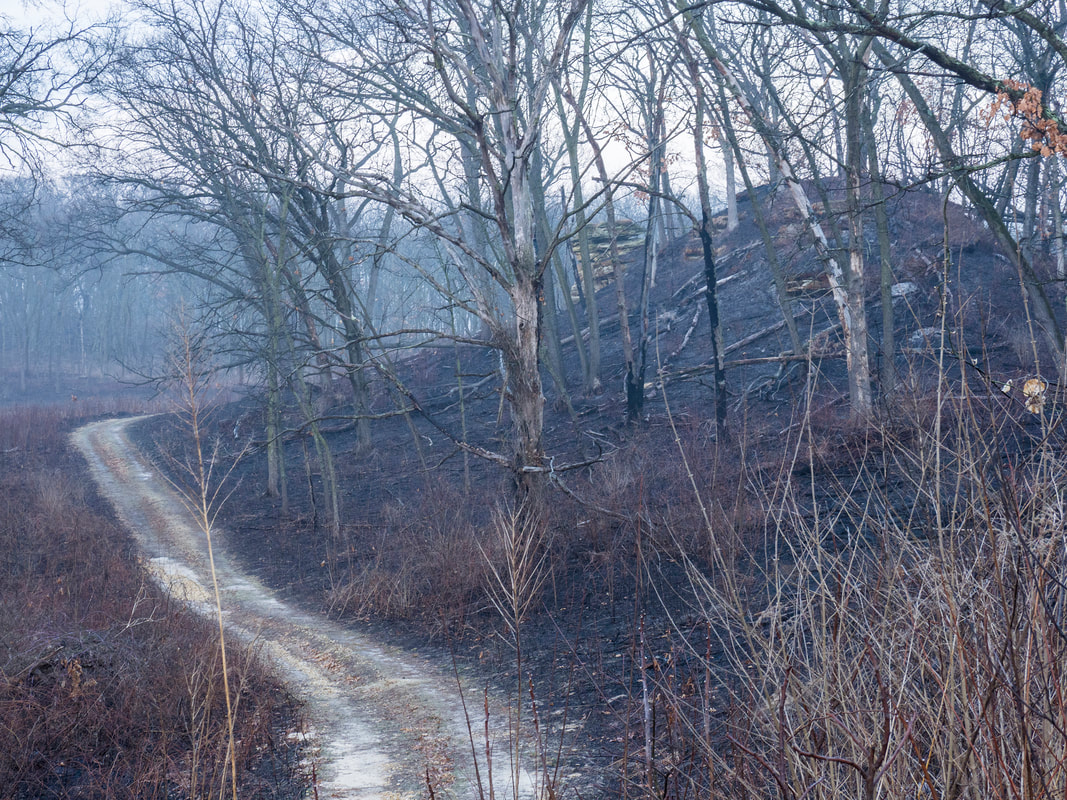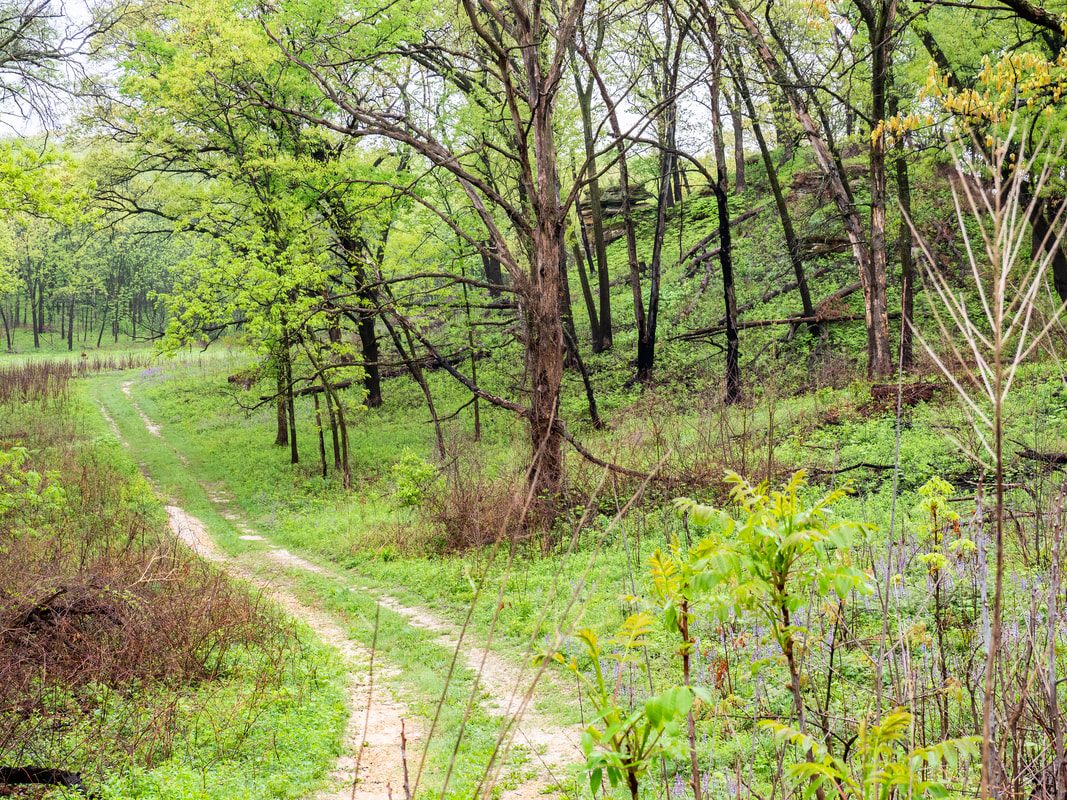|
By Charles Larry, with a thank you to Bill Kleiman for his help. Fire! The very word can conjure up images of terror or comfort. Forest fire, wildfire, or house fire evoke terror, while campfire, hearth fire, and cooking fire suggest comfort. Fire for a prairie or savanna means renewal. Fire is a necessary element in the way these ecosystems evolved. The native peoples of the prairies were using frequent low intensity landscape fires to encourage habitats that fit their needs for hunting, food, and medicine. The natural areas we now manage are dependent on those fires continuing. Fire kills the above ground portions of small trees and shrubs, sparing the oaks and hickories, which have adapted to fire with thick bark and the ability to re-sprout as needed. After a prescribed burn, the landscape looks bleak, seemingly devoid of life. But this is an illusion. Fire sets back woody plants, encourages wildflowers and grasses, and cycles nutrients. In just a few weeks vegetation begins to sprout anew. Plants such as wild lupine, foxglove, and ferns flourish after a prescribed burn. By summer, everything is in full bloom. Wildlife, such as deer, coyotes, foxes, rabbits, squirrels, opossums, raccoons, and birds, such as wild turkeys, red-headed woodpeckers, chickadees, goldfinches, indigo buntings, not to mention the myriad insects, all benefit from the lush environment. In this photo we see some old standing oaks that died from oak wilt or some other oak disease. Autumn is seed time and root time, returning again to underground. Dragonflies mass, preparing for migration. Migratory birds, such as northern flicker, indigo bunting, and summer and scarlet tanagers also gather in flocks to begin their migrations south. Tree frogs cease singing and bury themselves under logs, rocks, or leaf litter to hibernate the winter. The air becomes cooler. Frost happens with more frequency, foretelling the coming of winter. Winter is quiet and still but by no means vacant of life and activity. Deer roam about, eating dry grasses or other plants coming up through the snow, as well as twigs and the bark of trees. They also eat acorns or hickory nuts that have not been stored away by the squirrels. Coyotes and foxes prowl for voles or mice under the snow. Because the land is blanketed with snow, it protects the seeds that have been dispersed. When the snow melts in spring, it will help to plant and nourish those seeds. Thus the cycle begins again. This week's blog was written by Charles Larry, a volunteer and photographer at Nachusa. To see more of his images, visit his photography website.
5 Comments
|
Blog CoordinatorDee Hudson
I am a nature photographer, a freelance graphic designer, and steward at Nachusa's Thelma Carpenter Prairie. I have taken photos for Nachusa since 2012. EditorJames Higby
I have been a high school French teacher, registered piano technician, and librarian. In retirement I am a volunteer historian at Lee County Historical and Genealogical Society. Categories
All
Archives
January 2024
|
CONNECT WITH US |
|







 RSS Feed
RSS Feed